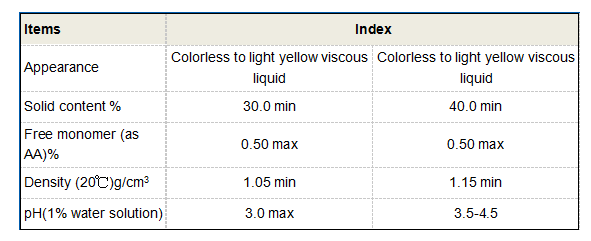Applications and Benefits of Anionic Polyacrylamide in Various Industries
The Uses of Anionic Polyacrylamide in Various Industries
Anionic polyacrylamide (APAM) is a synthetic polymer that has gained significant attention in a wide range of industrial applications due to its unique properties, such as high molecular weight, excellent water-solubility, and anionic charge. This versatile compound is derived from acrylamide, a substance commonly used in water treatment, soil conditioning, and various other industrial processes. In this article, we will explore the multiple uses of anionic polyacrylamide, highlighting its importance in different sectors.
1. Water Treatment
One of the primary uses of anionic polyacrylamide is in water treatment. As a flocculant, APAM facilitates the aggregation of suspended particles, making it easier to remove impurities from water. This application is crucial for municipal water treatment plants, industrial wastewater treatment, and the mining sector. By promoting the efficient settling of solids, APAM helps in reducing the turbidity of water, improving its overall quality.
In municipal settings, APAM is used to treat drinking water, ensuring that harmful contaminants are effectively removed. In industries, it assists in the clarification of process water and the treatment of effluents, helping companies comply with regulatory standards and minimize environmental impact.
2. Soil Stabilization
In agriculture and construction, anionic polyacrylamide is often employed for soil stabilization. The polymer enhances soil structure and promotes water retention, which is beneficial in arid regions. By binding soil particles together, APAM reduces erosion, increases the effectiveness of irrigation, and improves crop yields. Farmers utilize this polymer to condition the soil, resulting in better growth conditions for plants, especially in sandy or loose soils.
Moreover, APAM can be used to control dust on roads and construction sites. Its application helps in binding dust particles, reducing air pollution, and improving visibility in construction zones.
In the oil and gas industry, anionic polyacrylamide is utilized for enhanced oil recovery (EOR) processes. As an important component of polymer flooding techniques, APAM improves the viscosity of water injected into oil reservoirs, facilitating the extraction of additional oil. By increasing the sweep efficiency of water, it helps to displace oil trapped in porous rock formations, ultimately maximizing oil recovery rates.
anionic polyacrylamide uses

The use of APAM in EOR not only boosts production but also enhances energy efficiency by reducing the amount of water needed for extraction, making it a more sustainable choice in oil recovery operations.
4. Paper and Pulp Industry
Another significant application of anionic polyacrylamide is in the paper and pulp industry. APAM serves as a retention aid, helping to improve the retention of fibers and fillers during the papermaking process. This leads to higher paper quality, reduced raw material costs, and decreased environmental impact due to lower waste generation.
Additionally, APAM enhances the drainage and filtering processes, contributing to more efficient production cycles. Its ability to promote flocculation aids in the reduction of chemical usage, supporting the industry's move towards more sustainable practices.
5. Mining and Mineral Processing
In mining operations, anionic polyacrylamide plays a critical role in mineral processing. It is utilized for the separation of minerals from ores, improving the recovery rates during the extraction process. The polymer aids in the flocculation of fine particles, enhancing the efficiency of the separation process and allowing for better yield from mined materials.
APAM is also employed in tailings management, helping to stabilize waste materials and reduce environmental hazards associated with mining operations. By binding fine particles, it minimizes the potential for air and water pollution, thus supporting responsible mining practices.
Conclusion
The versatility of anionic polyacrylamide is evident in its wide range of applications across various industries. From water treatment and soil stabilization to enhanced oil recovery and paper production, APAM proves to be an invaluable resource for enhancing efficiency and sustainability in industrial processes. As industries continue to seek eco-friendly alternatives, the role of anionic polyacrylamide will likely expand, further underscoring its significance in modern applications.
-
Premium Isothiazolinones | Broad-Spectrum Biocidal SolutionsNewsAug.28,2025
-
LK-319 Special Scale And Corrosion Inhibitor For Steel Plants: Advanced Solutions for Industrial Water SystemsNewsAug.22,2025
-
Flocculant Water Treatment: Essential Chemical Solutions for Purification ProcessesNewsAug.22,2025
-
Isothiazolinones: Versatile Microbial Control Agents for Industrial and Consumer ApplicationsNewsAug.22,2025
-
Scale Inhibitor: Key Solutions for Water System Scale PreventionNewsAug.22,2025
-
Organophosphonates: Versatile Scale Inhibitors for Industrial Water SystemsNewsAug.22,2025





